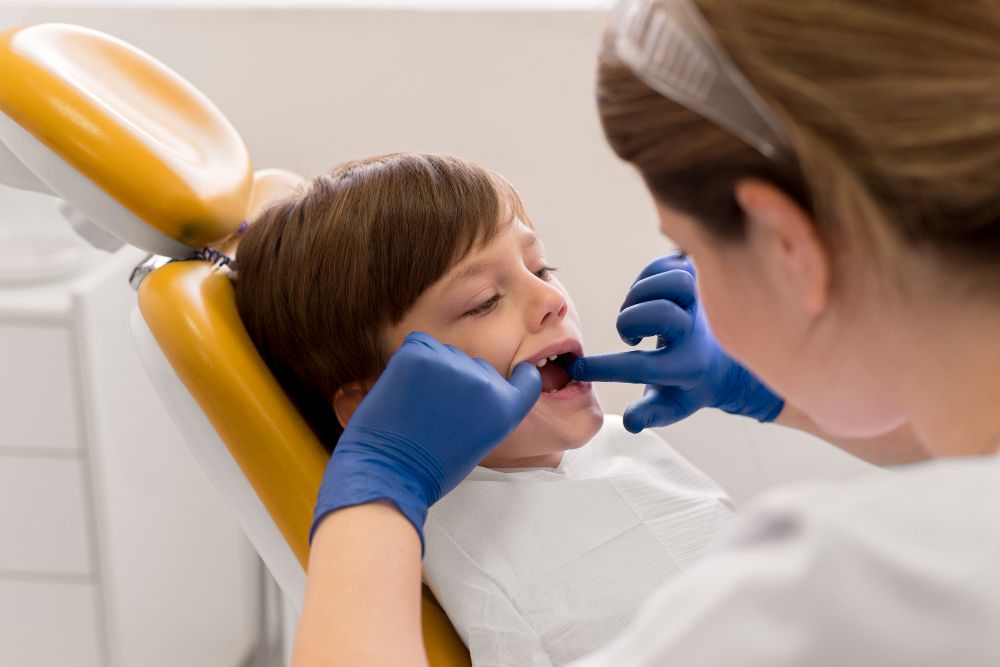Why Retainers Matter: Protecting Your Smile After Treatment

Why Retainers Are Essential After Orthodontic Treatment
Finishing orthodontic treatment is a big milestone, but keeping your teeth straight doesn’t end when braces or aligners come off. Without proper care, teeth naturally shift over time, undoing the progress you made.
Wearing a retainer is the key to maintaining your results. Retainers prevent teeth from moving back to their original position, helping you keep a straight, healthy smile for years to come.
In this guide, we’ll break down why retainers matter, how they work, and what happens if you don’t wear them. You’ll also learn how long to wear a retainer and the best ways to take care of it.
What Are Retainers and Why Do You Need Them?
A retainer is a custom-made device that holds your teeth in place after orthodontic treatment. Without it, your teeth can shift back to their original position. This process is called orthodontic relapse, and it happens because teeth are always moving slightly, even after braces or aligners.
How Teeth Shift Over Time
Once braces or clear aligners come off, the bone and tissue around your teeth are still settling. If they don’t have support, they may slowly move out of alignment. This is why retainers are necessary—to keep everything in place while your mouth adjusts.
Types of Retainers
There are two main types of retainers:
- Fixed Retainers: A thin wire bonded to the back of the teeth, usually in the front. It provides constant support and isn't removable.
- Removable Retainers: Made of clear plastic or a thin metal wire with an acrylic base. These must be worn as instructed and taken out for eating and brushing.
Both options work well, and your orthodontist will recommend the best one for your needs.
What Happens If You Don’t Wear a Retainer?
Skipping your retainer can undo all the progress made during orthodontic treatment. Teeth are always shifting, and without a retainer, they can gradually move back to their original position.
Risk of Orthodontic Relapse
Orthodontic relapse happens when teeth start shifting after braces or aligners are removed. It can happen within weeks if retainers aren’t worn. The longer you go without a retainer, the more your teeth will move.
Increased Treatment Costs
Not wearing a retainer can lead to the need for further orthodontic correction. If teeth shift too much, you might need braces or aligners again—an added expense that could have been avoided.
Timeframe for Relapse
- First few weeks: Teeth begin shifting subtly.
- First few months: Gaps and misalignment may become noticeable.
- After a year or more: Significant movement can require full orthodontic treatment again.
Wearing your retainer as instructed is the easiest way to keep your teeth straight without extra time or money spent on correction.
How Long Do You Need to Wear a Retainer?
Retainers aren’t just for short-term use. To keep your teeth straight, you’ll need to wear them consistently, especially in the first few months after treatment.
Initial Retainer Wear
For the first 3 to 6 months, most orthodontists recommend wearing a retainer full-time (day and night). This helps your teeth stay in place while the surrounding bone stabilizes.
Transition to Nighttime Use
After the initial period, you’ll likely switch to wearing your retainer only at night. This phase can last several years, depending on how your teeth respond.
Lifelong Maintenance
Teeth naturally shift as you age, so occasional retainer use—at least a few nights per week—is often recommended for life. It’s a small commitment that helps maintain your straight smile permanently.
Wearing your retainer as instructed prevents your teeth from shifting and keeps your orthodontic results intact for years to come.
How to Care for Your Retainer
Taking care of your retainer is just as important as wearing it. A dirty or damaged retainer won’t work properly and can lead to bacteria buildup, bad breath, or even damage to your teeth.
Cleaning Tips for Removable Retainers
- Rinse after each use – Always rinse your retainer with lukewarm water after taking it out.
- Brush gently – Use a soft toothbrush with mild soap or retainer cleaner (not toothpaste, as it can scratch the surface).
- Soak weekly – Use a retainer cleaner or a mix of water and white vinegar to remove buildup.
- Avoid heat – Hot water or leaving your retainer in the sun can cause warping.
Caring for Fixed Retainers
- Brush and floss daily – Use a floss threader or water flosser to clean around the wire.
- Watch for buildup – Tartar can form around fixed retainers, so regular dental checkups are essential.
- Check for damage – If the wire breaks or feels loose, contact your orthodontist immediately.
Signs You Need a Replacement
- Cracks or warping in a removable retainer.
- Tightness or looseness when wearing it.
- Visible buildup that won’t come off with cleaning.
A well-maintained retainer will last longer and continue protecting your straight teeth for years.
Final Thoughts
Wearing a retainer is the only way to keep your teeth straight after orthodontic treatment. Without it, your teeth will shift, and you may need braces or aligners again in the future. By following your orthodontist’s instructions and maintaining your retainer, you can protect your investment and enjoy a lasting, confident smile.
If you need a new retainer, a replacement, or guidance on proper use, Hansen Orthodontics in El Paso, TX offers expert care. They provide free in-person and virtual consultations to help you keep your smile looking its best.
Schedule a consultation today and take the next step in maintaining your orthodontic results.


